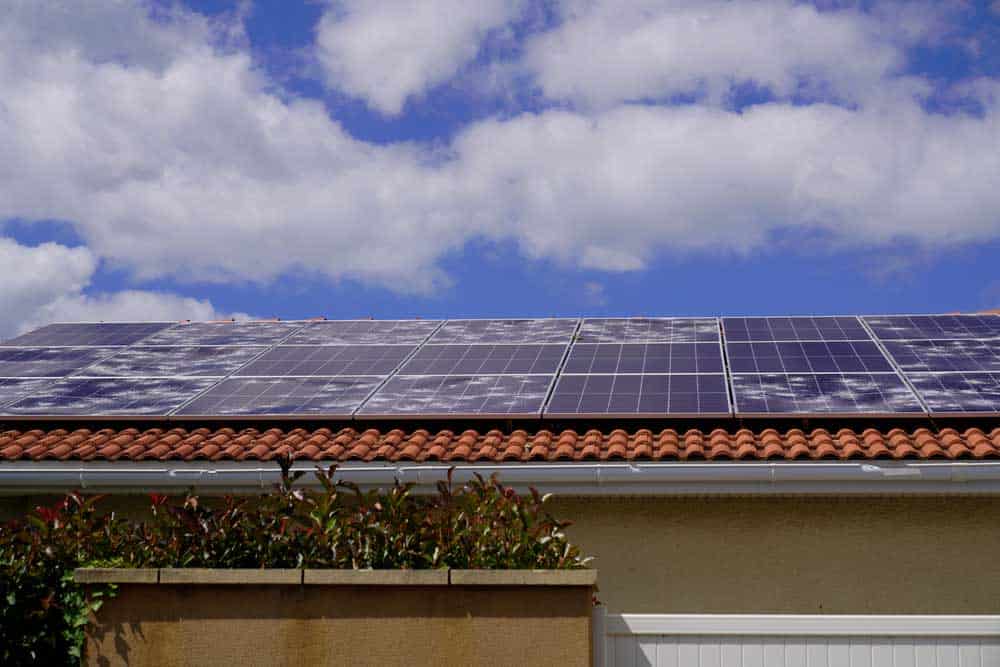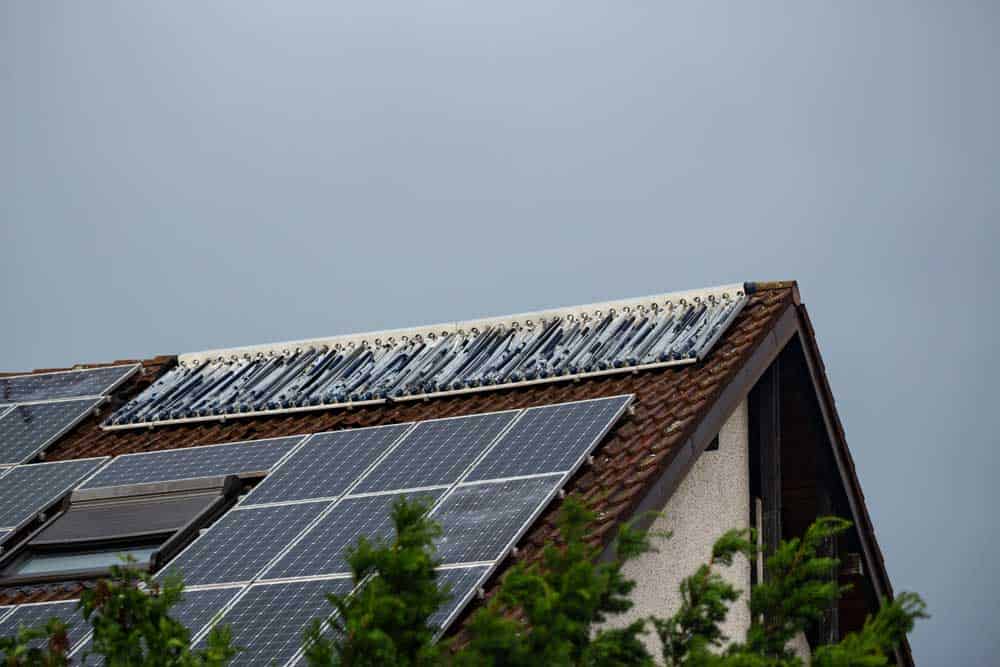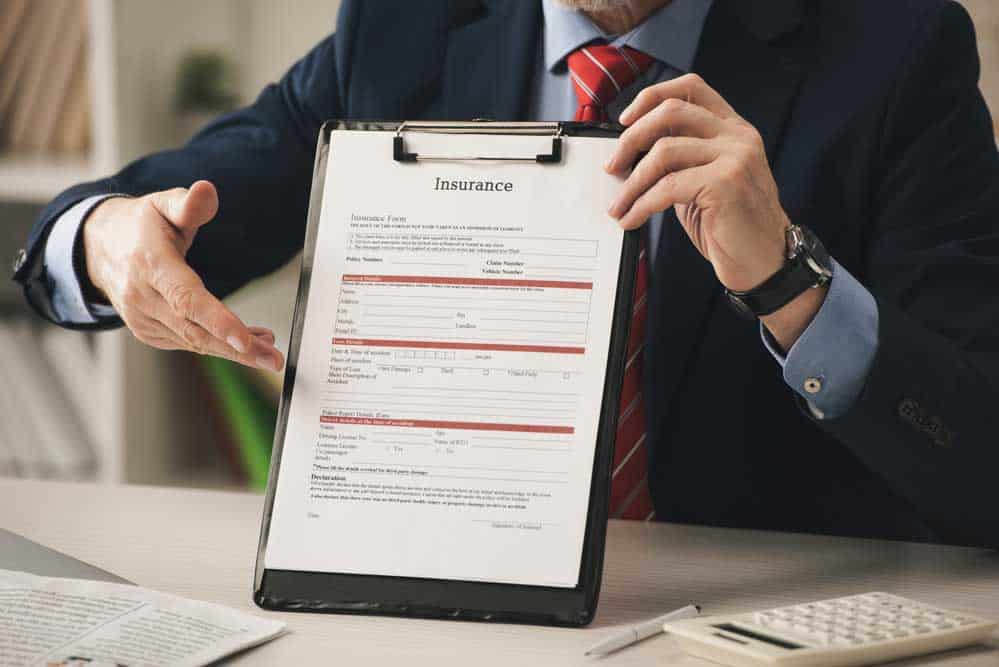Living in Colorado or a similar hail storm-prone area is blissful for the better part of the year. Such zones will experience about 300 days a year of consistent sunlight, making them ideal for tapping solar energy.
Nonetheless, the remaining days feature severe hail conditions. Such extreme weather conditions are an environmental menace as they destroy anything that comes their way.
It can hail damage solar panels?
Also, do solar panels insurance policies cover hail damage?
We’ll find out more about these queries below.
Can Hail Damage Solar Panels?

A hailstorm
Severe hailstorms can destroy solar panels, although the severity of the damage is minimal. Besides, some homeowners insurance policies cover damage to solar modules by hail stones. Thus, you need to consult your insurance company to see if they are ready to cover damage from hail.
The Durability of Solar Panels in Hail Storms and Hurricanes
Solar Panels in a Hurricane

Hurricane Katrina
On average, most solar cells can withstand winds of 140mph. However, some states, such as Florida, require solar installations to weather winds up to 160mph. Such areas receive stronger winds than the others and thus need more resilient solar panel systems.
Solar Panel Hail Damage

A shattered photovoltaic panel after hail
Again, solar power hail damage is uncommon, especially if the solar cells have undergone extensive testing on hail resilience. A standard hail impact testing procedure involves hurling ping-pong or larger ice balls at 70mph at the panels. The panels that pass this test can withstand massive hail storms without destruction.
Thus, the chances of hail tearing down a solar system are minimal in any setting.
Why is Hail a Problem for Solar Panels?

A heavy hail storm breaks solar panels.
Yes, a Light hailstorm is innocuous to solar panels. However, what are some effects of bigger-sized hail on solar cells?
Solar Equipment Damage
Quality solar panels have a tempered glass layer that acts as the actual hail guard. Thus, they’re safe from hail damage. However, the material primarily works for moderate hail. Hence, in instances of baseball-sized hail, your solar equipment will suffer some damage, albeit moderately.
Hence, although your panels won’t suffer severe hail damage, the cracks on their surface are weak points. They may thus increase in the future.
Hail Reduces Solar Panel Performance
Earlier, we said that the chances of hail damaging your panels are minimal. Moderate hail will cause small cracks on your panels and probably remain operational. Nonetheless, the efficiency of the panels will undoubtedly dip.
If you do not address the minimal solar array damage, the problem will increase and lead to the ultimate malfunctioning of the panel.
Hail and Solar Warranty Limitations
Most solar panel manufacturers do not cover hail damage. Also, when solar companies give ‘environmental factors’ warranties, they seldom cover severe hail storm damage.
Hence, it’s imperative to check if your module manufacturer covers hail damage, primarily if you reside in hail-prone areas. If they don’t, then you have to contact your insurance agent for homeowner’s insurance coverage.
Hail and Additional Insurance Costs

Solar panels hail damage can increase insurance costs
The average homeowners’ insurance policies cover solar panels as they are considered part of the house. Nevertheless, consult your insurance provider if their coverage includes damage by hail.
You may find out that while the insurer covers the panels, the level of coverage is minimal. In such a case, you’ll have to pay more for a more comprehensive cover. It will balloon your insurance costs.
Also, in most cases, the homeowners’ insurance covers the panels installed on the house’s roof. Hence, if you have ground-mounted panels, you’ll need an additional policy.
Hail Damage Solar Panels-How To Detect Damage?
Hail damage on solar systems can go unnoticed. However, the damage can continue if left undetected, and you’ll incur replacement costs.
So, here are two ways to detect natural disaster damage on PV modules.
a.) Inspect the solar damage.
After a torrential downpour and heavy snowfall, you must inspect your panels for any damage. Check out for the presence of dark spots and areas with broken glass or cracks. If you notice any, those are telling signs of panel damage.
b.) Monitor the Solar Panel effectiveness

Solar panel damage affects the efficiency
Say you cannot detect any significant physical damage, but you suspect the solar panel systems could be damaged. In such a case, track its performance, preferably via a mobile app.
If you note a significant dip in performance, especially after a heavy downpour, the panel has had severe hail damage.
How to Protect Your Solar Panels From Hail
1. Purchase Panels with a high rating

High-quality solar panels
Panels with a UL 61730 or IEC 61730 can withstand natural hail and extreme weather conditions. These PV panels have the resilience to withstand 1-3 inch hailstones. Hence, they’re viable in states such as Nebraska, Oklahoma, Kansas, and Texas and synonymous with 2-inch hailstorms.
Also, specific solar panel models are renowned for their high quality and have passed the certification for hail testing. They include:
- Q.PEAK DUO BLK panels by Hanwha Q Cells
- Neon R and Neon 2 by LG
- MSE PERC 60 by Mission Solar
- SIL-370 BK and SIL-380 BK by Silfab
- M series panels by Sunpower
2. Shield with a temporary protective cover
Consider covering your panels either with a padded or hard shell cover. A padded cover is soft and will absorb the hailstones’ sound.
On the other hand, the hard shell cover will be the best option if you live in an area with heavy downpours. It’s water resistant; thus, no water or hail will contact your panel.
While a cover shields the array from hail damage, it also blocks the sun’s rays. Hence, it would help if you covered only solar cells when necessary.
3. Regularly inspect the panels after a storm
Ensure you make routine checks on the condition of your solar arrays, especially after a heavy storm. Also, make sure your solar installer understands the best solar panel for the weather conditions in your area.
4. Ensure hail slides off the PV panel

Incline solar cells at an acute angle for hail and rain to slide off
It would be best if you inclined your solar panels at an acute angle to allow hail and water to slide off. It is especially important if you’ve mounted your panels on a separate surface from the rooftop.
Accumulating hail will add pressure to the panels and affect their efficiency.
FAQs
Can you repair hail-damaged solar panels?
It is possible to repair a hail-damaged solar panel as long as the severity of the damage is minimal. Also, it’s crucial to engage the services of a solar repair professional rather than carry out the repair yourself.
Can Snow Damage Solar Panels?
Snow and hail can damage solar panels. However, the severity of damage is significantly low, especially if the PV panels have passed the hail impact tests.
Summary
Hail damage to solar panels is possible, albeit insignificant, as most quality panels pass the rigorous testing for hail and snow. However, hail can stall a solar panel’s efficiency.
Hence its imperative to undertake the protection measures highlighted in this blog post for the optimal performance of your solar panels.
Thanks for your time, and we wish you long-term service of your PV cells.
